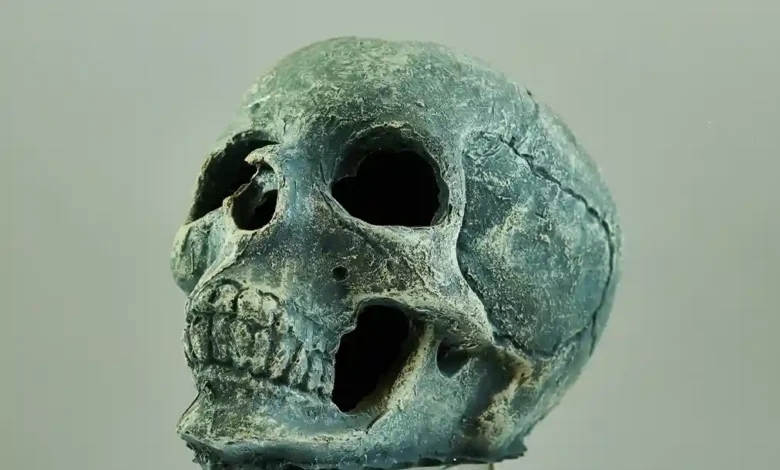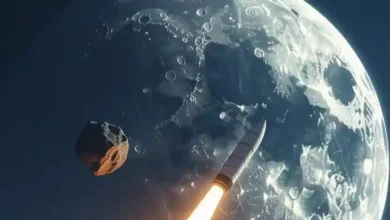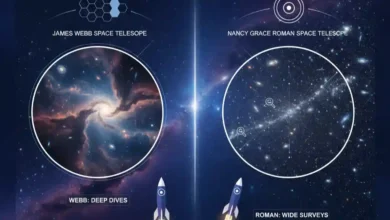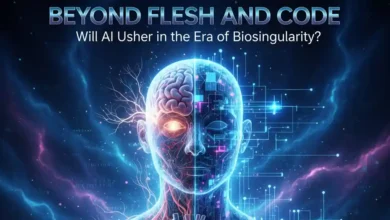Million-Year-Old Human Skull Rewrites Human Evolution

Imagine standing in a dusty quarry in central China, sifting through layers of earth that whisper secrets from a time when woolly mammoths roamed and ice ages gripped the planet. What if the bones you unearth force us to rewrite the story of our own origins—not by a few thousand years, but by half a million? A groundbreaking study published just days ago in the prestigious journal Science has done exactly that. Researchers analyzing a crushed, million-year-old human skull from Yunxian, China, claim it reveals that the roots of Homo sapiens—our species—stretch back far deeper into prehistory than anyone dared imagine. This isn’t just a fossil find; it’s a seismic shift in paleoanthropology that challenges our understanding of human migration, interbreeding, and what it truly means to be human. Buckle up as we dive into the gritty details of this discovery, explore its mind-bending implications, and ponder how it reshapes the epic tale of our evolution.
The Yunxian Discovery: Unearthing a Time Capsule from 1 Million Years Ago
It was the early 1990s when local workers in Hubei’s Yunxian County stumbled upon something extraordinary amid the gravel pits of the Han River basin. Embedded in ancient sediments, they pulled out not one, but three partial human crania—skulls that would languish in storage for decades, their true significance obscured by damage and the era’s limited technology. Fast-forward to today: the star of the show is Yunxian 2, a remarkably preserved yet grotesquely distorted specimen dated to between 940,000 and 1.1 million years old. This places it squarely in the Chibanian stage of the Pleistocene epoch, a period of dramatic climate swings that tested early hominins’ adaptability.
Why does this matter? For context, the oldest widely accepted Homo sapiens fossils hail from Jebel Irhoud in Morocco, clocking in at around 300,000 years old. Neanderthals emerged roughly 400,000 years ago, and Denisovans—a mysterious Asian cousin—around the same timeframe. The common ancestor of these groups was pegged at about 500,000–800,000 years ago, give or take. But Yunxian 2? It’s a wildcard from a million years back, predating these milestones by an astonishing half-million years or more.
The site’s geology tells a compelling story. Yunxian 2 was found in layered fluviolacustrine deposits—river and lake sediments rich in mammal fossils like ancient elephants and rhinos, which helped pin down the age through biostratigraphy and paleomagnetism. These methods confirmed the skull’s antiquity, aligning it with a global magnetic reversal event around 1 million years ago. No stone tools were directly associated, but the surrounding fauna hints at a hunter-gatherer lifestyle in a lush, forested environment—think dense woodlands teeming with prey, far from the arid savannas we often romanticize as humanity’s cradle.
Paleoanthropologists have long puzzled over East Asia’s role in human origins. While Africa holds the crown for the earliest hominins (like Australopithecus afarensis, Lucy’s kin, from 3.2 million years ago), Asia’s fossils have been trickier to classify. Enter Yunxian: a potential bridge between the robust Homo erectus (the “upright man” who left Africa around 2 million years ago) and the more gracile, brainy forms that followed. But as we’ll see, it’s no mere bridge—it’s a whole new highway.
Cracking the Code: Digital Resurrection of a Mangled Fossil
Here’s where the science gets really exciting—and a testament to how far we’ve come since the skull’s discovery. Yunxian 2 wasn’t just old; it was a mess. Crushed by millennia of sediment pressure, its bones were fragmented, displaced, and warped like a puzzle smashed underfoot. Early assessments dismissed it as Homo erectus, but that was based on eyeballing the wreckage. To unlock its secrets, a multinational team led by Prof. Xijun Ni of Fudan University and Prof. Chris Stringer of London’s Natural History Museum turned to cutting-edge tech.
The process? High-resolution computed tomography (CT) scanning. They bombarded the fossil with X-rays to create thousands of digital slices, then used software to segment bone from matrix—essentially, digitally chiseling away the rock. Fragment repositioning followed, guided by anatomical landmarks like suture lines and vault curvature. Unlike plastic deformation (where the bone bends like taffy), the distortion here was mostly rigid displacement, making reconstruction feasible. The result: a virtual 3D model so precise they 3D-printed physical replicas for hands-on study.
Morphometric analysis sealed the deal. Using geometric morphometrics—a fancy way of saying “measuring shapes with math”—they plotted 533 landmarks and semilandmarks across the cranium. Between-group principal components analysis (bgPCA) compared Yunxian 2 to 26 fossil hominins and 153 modern humans. The verdict? A mosaic of traits: primitive ones echoing H. erectus (thick brow ridges, robust build) mixed with derived features hinting at later humans (expanded braincase, reduced face).
Phylogenetic trees, built via parsimony and Bayesian tip-dating, further clarified its spot. Yunxian 2 clusters firmly in the Homo longi clade—an enigmatic group proposed in 2021 for “Dragon Man,” another Chinese fossil. This clade, including Denisovans, sits as a sister to H. sapiens, with their split estimated at 1.32 million years ago. Neanderthals branched off slightly earlier, around 1.38 million years. As Ni told the BBC, “I didn’t believe it at first… We tested it over and over with different models.” Skeptics like Dr. Aylwyn Scally of Cambridge urge caution—genetic data is sparse—but the morphology is compelling.
Yunxian 2: A Snapshot of Our Mosaic Ancestors
So, what did this ancient brain look like? Yunxian 2’s reconstructed cranium boasts a brain volume of about 1,225 cubic centimeters—larger than H. erectus‘s 900–1,100 cc but shy of modern humans’ 1,350 cc average. Its face is flat and wide, with massive cheekbones and a protruding midface, yet the forehead slopes less steeply than in earlier species. These “mosaic” features—old and new traits jumbled together—paint Yunxian 2 as a transitional form, right at the crossroads where our lineage began to diversify.
Think of it as evolution’s remix album. Primitive holdovers, like the sagittal keel (a midline ridge on the skull top), nod to H. erectus‘s Asian variants. But innovations, such as a more globular braincase, foreshadow the neural upgrades that powered art, language, and tool innovation in later humans. This isn’t your lumbering caveman; it’s a proto-human navigating a world of megafauna and mega-brains, perhaps wielding fire and flint with a spark of ingenuity.
Comparisons to other fossils illuminate the bigger picture. Yunxian 2 aligns with China’s “muddle in the middle” crew: the Dali skull (260,000 years old), Jinniushan (200,000 years), and Hualongdong (300,000 years). Previously orphans in classification, these now nestle under the H. longi umbrella, suggesting Asia wasn’t a evolutionary backwater but a hotbed of hominin experimentation. And let’s not forget Denisovans, known mostly from DNA in Siberian caves. Yunxian 2’s traits bolster the idea they were burly, high-altitude adapters who interbred with H. sapiens as recently as 50,000 years ago—leaving echoes in modern genomes from Oceania to the Andes.
Shattering the Timeline: Homo Sapiens’ Earlier Dawn
The bombshell? This skull shoves the sapiens lineage’s origins back by at least 500,000 years. Previously, the “Out of Africa” model posited H. sapiens coalescing in Africa around 300,000 years ago, with Neanderthal-Denisovan splits ~500,000 years prior. Now, Bayesian models peg the longi-sapiens divergence at 1.32 million years, implying our clade’s deep roots in the Early Pleistocene. “The narrow temporal gap between Yunxian and deeper longi nodes suggests rapid early diversification,” the Science paper notes, mirroring bursts in sapiens and Neanderthal lines.
This isn’t just number-crunching; it’s a paradigm flip. If early sapiens-like forms roamed Asia a million years ago, where does that leave Africa? Stringer speculates undiscovered fossils there could confirm an even earlier African genesis, with waves of migration pinging back and forth across Eurasia. Climate data supports this: the Mid-Pleistocene Transition around 1 million years ago ramped up ice age cycles, pressuring hominins to innovate—or perish. Yunxian 2, thriving in subtropical China, embodies that resilience.
Critics point out gaps: no DNA from the skull (too degraded), and Asia’s fossils skew toward robust forms, potentially biasing trees. Yet, the study’s robustness—bootstrap resampling hitting 90%+ support—lends weight. As Scally caveats, “It’s plausible, but we need more data.” Still, it resolves the “muddle”: fossils from 800,000–100,000 years ago now slot neatly as archaic sapiens, longi, Neanderthals, or erectus holdouts.
Ripples Through Time: What This Means for Us
Zoom out, and Yunxian 2 isn’t just ancient history—it’s a mirror to our present. If our lineages coexisted for 800,000+ years, interbreeding wasn’t a fluke but a norm, weaving a genetic tapestry richer than any single-origin myth. Modern humans carry 1–4% Neanderthal DNA; Denisovan traces linger in billions. This extended tango suggests a web of connections, not isolated branches, challenging notions of “pure” ancestry.
Philosophically, it’s provocative: Are we the endpoint of evolution, or just a twig on a sprawling tree? A million-year sapiens dawn implies untold lost chapters—extinct cousins whose tools, art, or songs we’ll never know. Environmentally, it underscores adaptability’s cost: today’s climate crisis echoes those Pleistocene upheavals, demanding the same ingenuity.
For science, it’s a call to arms. Expeditions to China’s karsts or Africa’s rift valleys could unearth more “Yunxians,” armed with CRISPR for ancient DNA and AI for reconstructions. As Ni muses, this fossil “elucidates the origin of Homo longi and the Denisovans,” but it also humanizes them—flawed, fierce survivors like us.
Echoes from the Past: A Call to Rethink Our Story
In the quiet of a million-year-old skull lies a roar: humanity’s story is older, messier, and more wondrous than we thought. Yunxian 2 doesn’t just push timelines; it pulls us closer to our tangled roots, urging humility amid hubris. What other secrets lurk in forgotten quarries? As we grapple with AI, space travel, and existential threats, this discovery reminds us: evolution isn’t done with us yet.
Curious for more? Dive into the Science paper or explore Natural History Museum exhibits on human origins. What’s your take—does this rewrite your family tree? Share in the comments below. After all, in the grand fossil record, we’re all just skulls waiting to be reconstructed.
For more Odinozz Science articles, click here.
Follow Odinozz on social media. Click here.



